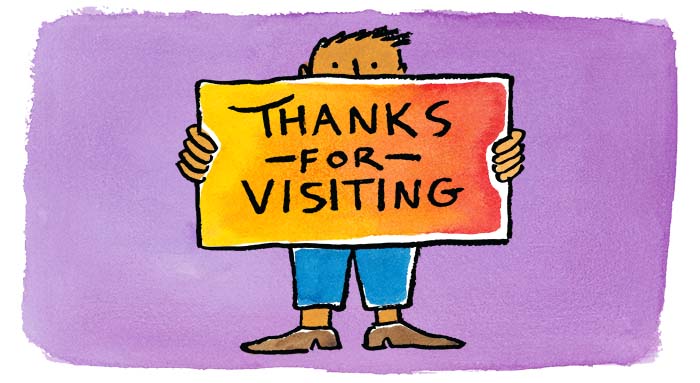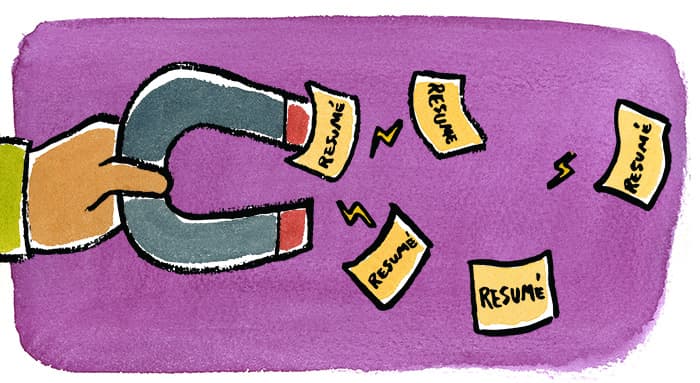
You’ve seen the media buzz about quiet quitting. But is it a trend you should care about? Or just another passing HR fad?
Also referred to as “acting your wage,” the driving idea behind quiet quitting is that employees are only performing work duties within work hours and keeping their free time, y’know… free.
And while some have called it a fake trend, others believe the impact of quiet quitting is very real — and a very real challenge for modern employers. To get to the bottom of the issue, we reached out to eight HR insiders for their candid opinions on just how worried employers should be.
Here’s what we’ll cover
- What is quiet quitting? 🤐
- 8 HR experts weigh in
- Say goodbye to quiet quitting
What is quiet quitting? 🤐
This summer, quiet quitting (not so quietly) took over #WorkTok as business-professional TikTokers gained millions of viewers interested in this HR trend. But what is it exactly?
Quiet quitting is described as unofficially “resigning” from going above-and-beyond for your employer, without outright quitting your job. Employees who have “quietly quit” are still living up to the job description, but are not actively looking for ways to overdeliver.
It’s difficult to pinpoint exactly who coined the phrase “quiet quitting”, but from the moment it hit the headlines, it’s attracted major attention from business pundits across a variety of industries.
And according to the latest research on quiet quitting, the ratio of engaged to actively disengaged employees is now 1.8 to 1 — the lowest in almost a decade.
Though the term has only recently been thrust into the spotlight, aspects of quiet quitting have always existed, both in the workplace and popular culture. Think April Ludgate from Parks & Recreation, Ron Livingston's character in Office Space, and of course, good ol’ Wally from the Dilbert comic strip.
All of these figures are strategically disengaged from their work, but still manage to do just enough to keep their jobs. And while these quiet quitters are usually played for laughs, there may be some truth to their bare minimum, work-life premises.
So how can you tell the difference between employees who are setting boundaries in a reasonable way and those who might be guilty of “quiet quitting”? And is refusing to go all in on hustle culture really as bad as it seems? We asked eight human resource management experts for their takes.
8 HR experts weigh in on quiet quitting 🤫
Yes, quiet quitting is a thing. And so is quiet firing.
According to Jared Pope, CEO & Founder of Work Shield, quiet quitting is a proven problem. And with over a decade of experience protecting employees and employers from toxic workplace cultures, we’re inclined to believe him.
“For employers who think quiet quitting and firing aren’t plaguing the workplace: think again. A recent study by Gallup revealed over 50% of US workers are guilty of quiet quitting, while a LinkedIn poll found that over 80% of participants had witnessed quiet firing,” he explains.
The way Jared sees it, if you want to address the root causes of quiet quitting — you need to listen to the data.
Build a listening culture
Matt Thomas, President at WorkSmart Systems, says quiet quitting isn't some nutty social media trend driven by a handful of popular TikTok users … it’s really just a new name for an old problem. “The phenomenon has been around for as long as jobs have existed — it’s simply never been codified before.”
So how do we solve the problem of quiet quitting?
“The solution may seem simple at face value: focus on current employees and listen to their needs, but the act of fixing the problem is never as easy as it may seem.”
Let’s break it down: “Leaders need to start by building a culture based on listening. Employees who feel they are listened to are more likely to stay engaged in their work. To do this successfully, HR departments need to send out completely anonymous surveys and use the information received to help steer the company's culture in the right direction.”
Get to the root of the problem
According to Deanna Baumgardner, President at Employers Advantage LLC, quiet quitting is a symptom of a deeper problem exacerbated by the shift to remote work.
“Priorities changed for a lot of people over the past couple of years and there was a huge light that came glaring down on the workplace and highlighted antiquated policies and practices,” she explains.
“People took notice and made decisions on how they want to live and work and are now putting that into action. Some people realized they were giving too much of themselves and not getting what they needed in return, so they are putting up boundaries to protect their time and their well-being. As they should.”
“People can call it whatever they want,” Deanna continues, “but the root of employee behavior and engagement (or lack of engagement) will never change. It boils down to how people are treated at work, how they feel about the work they are doing and whether they are supported and respected in the workplace.”
*cue mic drop*
Quiet quitting is real (and it can be contagious)
Bill Catlette, founding partner at Contented Cow, dropped knowledge on the history of quiet quitting and how it spreads. 😷
But first, let’s take a look at his pointed definition of quiet quitting. According to Bill, “people who are ‘quiet quitting’ are essentially keeping their job and paycheck by showing up to work, but quietly (mostly) going on strike against their boss.”
The way Bill sees it, this isn’t a new phenomenon — not by a long shot.
“For as long as people have toiled in service to one another, we have metered (subconsciously at times) our level of effort,” he explains. “When we are really on-task, focused and fired up, it's amazing how much we can accomplish. When we're not in the mood, feeling unappreciated perhaps, we go through the motions, doing just enough to avoid getting fired.”
And when one overworked employee starts to mail it in, expect others to follow suit. “Beyond impacting reliability and productivity, the behavior spreads like, well, uh, pick your favorite virus. If one person in a group of three is sleepwalking, inevitably, the other two wind up with extra work. They will only play nice for so long,” Bill cautions.
What can you do to nip quiet quitting in the bud? Here are Bill’s top three tips:
- “Focused and fired-up workforces are those that are capably led — not "supervised", led. Management must do a much better job of selecting people, at all levels of management, who possess the character, temperament, and desire to lead others. Having done so, they must continually sharpen their skills, giving them a better than even chance of succeeding. Listening and time/priority management techniques are a good place to start.”
- “Not unlike selling, recruiting is a process that must continue whether there are current openings or not. The odds of a great candidate having a hole in their dance card at the exact moment a position opens up at Acme Widget Services are remote indeed. When you get behind, position incumbents are asked to sacrifice, and eventually, the hiring manager's standards are lowered to the point that they will hire a warm body just to put a butt, any butt in the chair.”
- “When it seems that the wheels are coming off, the first impulse of many managers is to open their mouths, a lot, loudly even. Sometimes that's necessary. Frequently, it's not. They might find that it's better to open their ears to discover what the true cause is, and what the people closest to it think the possible solutions might be.”
Keep workload compression at bay
Max Wesman, Chief Operating Officer at GoodHire, challenges employers to keep the real issue in mind — and according to Max, that issue is workload compression.
But what exactly is workload compression?
“Over time, capable employees tend to suffer from something called ‘workload compression’: after receiving odd jobs from peers, taking on new responsibilities, and doing it all without a comparative increase in pay, their productivity starts to decline. However, expectations from management continue to climb,” Max explains.
Sounds exhausting, right? That’s because it is.
“As managers expect an employee's output to remain stable, the resulting compression gives workers less bandwidth to perform their roles. All the while, they face more pressure to make fewer mistakes. By then passing judgment or extending disciplinary action, management can make a difficult situation even harder to handle for an overwhelmed employee. This creates a perfect storm. When a worker's needs aren't met, and there's no signs of change on the horizon, they will feel forced to create mental distance and quietly quit,” Max notes.
To remedy workload compression, keep an eye on your employees’ bandwidth before they start to feel crushed.
“You must get to the root of the issue before standards start to slip, so as to keep productivity at its operational maximum. Remember that although workers often feel obliged to go above and beyond, this should never become the new standard.”
Give employees more breathing room
Andrew Gonzales, co-founder and president at BusinessLoans.com, comes out swinging with some top tips to combat quiet quitting, namely that employers should give employees room to bloom. 🌼
According to Andrew, “[Quiet quitting] happens when employees are unsatisfied with the conditions of their employment or the nature of the workplace itself. Common reasons include a lack of growth opportunities, or insufficient compensation against the industry standard.”
“When employees feel as though they have no room left to grow, they make one last stand before resorting to resignation.”
And that stand is quiet quitting. To fix it, you can do one of two things:
- Cut down on work
- Offer more pay
“You may choose to recalibrate an employee's workload by delegating excess work to others. This gives the employee additional breathing room so that they can carry out their original duties to a much higher standard,” Andrew explains.
But if that's not an option, “consider offering a higher rate of compensation or a better set of benefits. An equitable exchange of work and pay ensures that the ‘psychological contract’ between both parties remains firmly intact. In turn, this keeps employees engaged and prevents them from feeling overworked or under-appreciated.”
Actively promote work-life balance
According to Maximilian Wühr, CGO & Co-founder at FINN, quiet quitting is a sign that workers are rejecting the status quo and prioritizing their own mental health.
“We hear more about quiet quitting now because it isn’t perceived as laziness but as prioritizing one’s own mental health and personal time above professional achievements,” Maximilian explains.
The way Maximilian sees it, In order to provide for employees so they don’t feel the need to withdraw, they must prioritize work-life balance.
“Employers really only have one option to combat quiet quitting — to create a workplace that encourages work-life balance for all. That may mean hiring enough employees to share high-pressure tasks and giving employees more flexible work options.”
But ultimately, “your employees shouldn’t have to push themselves to burnout to achieve above and beyond their job description. If that’s the expectation in your workplace, the attitude adjustment needs to happen within leadership, not employees.”
Preach! 🙌🏻
Realign employer-employee expectations
David Bitton, Co-founder & CMO at DoorLoop, believes quiet quitting is the result of a simple misalignment in employer-employee expectations.
“There is an implicit mismatch between what an employee desires and what leadership provides. High levels of quiet quitting, burnout and attrition are observed in organizations where employees are expected to perform tirelessly until they are completely drained for the benefit of the organization.”
The solution? It’s just as simple.
Set a meeting to touch base and realign expectations so no one is doing more work than they should.
Say goodbye to quiet quitting and keep your employees engaged
While the quiet quitting trend may seem overblown at times, the takeaways for employers are real.
Modern organizations need to do a better job of setting clear expectations, respecting employees' boundaries, and actively addressing their concerns.
And it all starts with the hiring process.
When you’re ready to elevate your hiring process and give candidates the experience they deserve, Breezy is here to help. Try the modern applicant tracking system employers are raving about with a totally free 14-day trial.





